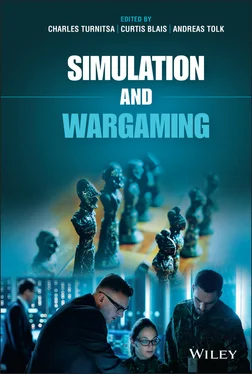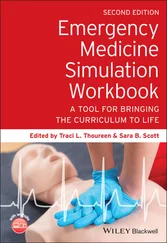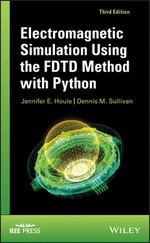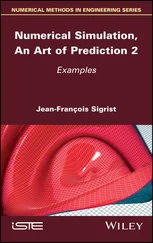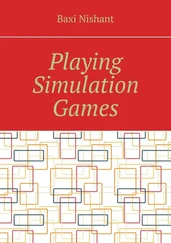In chess, an opponent’s piece can be attacked if it occupies a space that the attacker can move one of its pieces to using the proscribed move for the attacking piece.
In ground combat, a system must first acquire an opponent’s system before attacking. Unlike chess, where all pieces are seen by both sides and all possible attacks can be easily identified, combat systems have to find an enemy entity before attacking. Once that entity is acquired, it can then be attacked. The acquisition process can be from the attacking system, from a third party, or from a combination of systems on the battlefield. A tank or an infantryman typically acquires its own targets to attack, where indirect fire assets such as attack aircraft, mortars, and artillery usually attack targets that have been identified by another entity on the battlefield. Once it is decided, a system will engage a target, there may be different attack mechanisms that can be employed and must be specified. Systems often have more than one weapon. A tank has a main gun and a coaxial machine gun. An infantry fighting vehicle has a 25‐mm chain gun and an anti‐tank missile. An infantryman has a rifle, grenades, and a bayonet. A tank’s main gun has different types of main gun ammunition for different purposes.
In chess, if the piece is attacked, the adjudication is simple: it is removed from the board, in essence destroyed. It does not matter what the two pieces are, a lowly pawn can attack and destroy an opponent’s pawn or its queen. In ground combat, systems can be removed from the battlefield if destroyed, but systems can also be damaged (or wounded for human “systems”). A damaged system may still be able to move and/or fire, so the amount of damage and remaining functionality of the system must be determined. Damage can be cumulative, so a damaged system can be subsequently destroyed if attacked again, depending on the attacking system and the damage that it can deliver. Damaged systems can also be repaired and returned to the battlefield depending upon the amount of damage sustained and the availability of resources needed to repair the system.
A chess game ends when a player’s king is in check and under attack by the opponent and cannot move to a space where it is safe from attack on the next move. In ground combat, victory conditions are highly dependent on the objectives of the combatants. Each side may have a “breakpoint” designated, that is, lose no more than x percent of your force executing this mission. Usually an attacker has a goal that either has to do with seizing terrain or destroying an enemy formation. A defender may have the goal of retaining the terrain it defends, inflicting a certain amount of damage to the attacker before yielding the terrain, or delaying the attacker for a length of time before yielding the terrain. Note that the objectives of attacker and defender may both be met (seize terrain and inflict a certain amount of damage before yielding terrain).
Today’s closed‐loop combat simulations are useful for assessing the goodness of adding capability to a formation through use of scientific method‐like process for comparison. They cannot predict future outcomes of battle. They are tremendously more complex than chess or Go. The complex decision calculus a battlefield commander goes through that results in forces maneuvering and attacking is greatly simplified to IF‐THEN types of decisions. In summary, closed‐loop combat simulations are good at comparing different force options given the assumptions and simplifications are known and acceptable.
In other literature, you will be able to find comparisons of wargames and computer‐based combat simulations with lists of attributes and an assessment of which of the two tools is “better” vis‐ à ‐vis a particular attribute. This is a false dichotomy. Wargames and combat simulations are two different tools that are designed to produce two very different types of outputs. Wargames are used to investigate the human decision‐making process and are not the primary tool to be used for making quantitative assessments or comparisons. Combat simulations are used to quantify the differences in forces, often using the scientific method process, but have little utility to investigate the human decision‐making processes. Professional analytic agencies have recognized the utility of both tools and have often used a combination of tools to produce a more thorough and complete study of the phenomena of combat. This process can be described as “campaign analysis.” The process of designing a campaign analysis is described by Kline, Hughes, and Otte:
The campaign’s objectives come from direction provided by political and military leadership at the national level. Derivation of a concept of operations to achieve those objectives, and metrics to measure their achievement, is done in collaboration with the commander and his staff. Assumptions are agreed to and provide a bound on the analytical study. 37
Once the goals of the campaign are thoroughly understood by all through a series of interactions between the stakeholders and the analysts, then the design process begins. A campaign analysis can be as simple as a wargame conducted to develop a CONOPS that is then instantiated in a closed‐loop simulation for quantitative analysis, or it can be far more complex. The analysis done for the US Army’s Future Combat Systems used over 50 different wargames and simulations. 38 As Kline et al. describe: “We concurrently select a model or series of models to represent the campaign environment. Broadly speaking, models bound the campaign in either a series of engagements (pulses of power) or a continuous operation where many small engagements create a larger effect (cumulative warfare).” 39 “Model categories range from closed‐form probabilistic equations, computer simulations, optimization, and wargames to field experiments and operational rehearsals.” 40 “For example, a wargame may help to develop concepts of operation and employment for the opposing sides. The wargame’s interactions may be adjudicated by tactical simulations, equations, historic engagements or professional judgment. Once an employment concept or course of action is generated, it may be programmed in a larger campaign simulation to conduct analysis on many model variations.” 41
The realization that a campaign is a series of engagements or many small engagements that create a larger effect reinforces the realization that Lanchester made studying the battle of Trafalgar, and the conclusion that the CARMONETTE mathematical modelers came to about half a century after Lanchester: applying a closed‐form computer simulation to combat should only be done for small, short engagements, because the human decision‐making is such an important element of combat that to ignore it and presume that algorithms alone could accurately model the complexity of a campaign of modern combat’s decision processes is pure folly.
Both wargames and closed‐loop combat simulations will continue to have roles in analysis. Wargames will continue to help us understand trade‐offs in CONOPS and courses of action development and will play a major role in the creation and development of new employment concepts and new tactics, techniques, and procedures as new weapon systems and capabilities are integrated into our fighting forces. Closed‐loop combat simulations will continue to provide the capability to assess the physics‐based qualities of our forces and will allow us to tabulate, in the absence of any human input, the relative technological merits of new weapon systems and new formations.
Читать дальше
